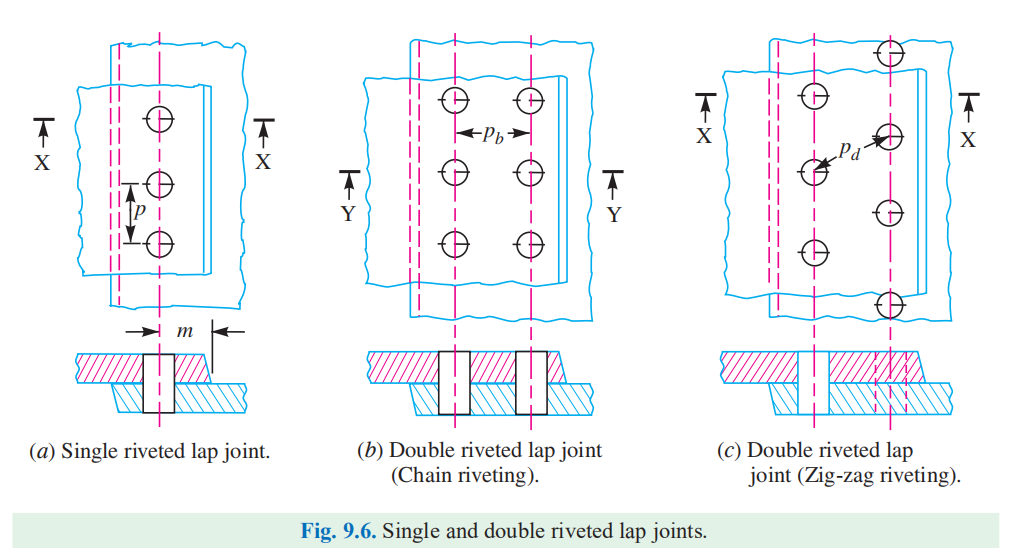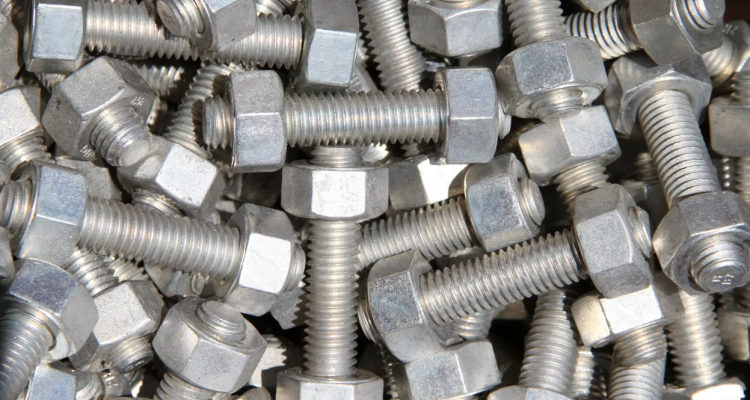
What is the minimum rivet spacing for a single row of rivets
The minimum spacing for a single row of rivets, typically three times the rivet’s diameter, ensures structural integrity. For example, a 5mm rivet should have at least 15mm spacing.
Rivet diameter
Construction and mechanical industry standards recommend a minimum spacing of three times the diameter of the rivets, and a minimum spacing of 12 mm for rivets with a diameter of 4 mm. When using rivets with a diameter of 6 mm in the aviation industry, the minimum spacing is recommended to be 18 mm. This spacing ensures structural integrity while minimizing the spread of stress points to reduce metal fatigue caused by stress concentration. The edge distance is set to twice the diameter of the rivet, in this case 12 mm, to ensure that the edge of the material will not crack under excessive pressure.
Rivets with a diameter of 8 mm are used in the construction industry with a minimum spacing of 24 mm. Rivets with a diameter of 10 mm may be used in the manufacture of steel plate connections for large ships. For rivets of this size, the minimum spacing is 30 mm. In electronics or furniture manufacturing, when using rivets with a diameter of 3 mm, the appropriate minimum spacing is 9 mm.

Rivet type
A typical solid rivet has a diameter of 6 mm with a minimum spacing of 18 mm, which is calculated based on three times the diameter of the rivet. Due to their strong nature, solid rivets are suitable for the manufacture of connections that bear high loads such as Bridges and high-pressure vessels.
Blind rivets (also known as pull rivets) are used where the joint cannot be accessed from both sides. When using blind rivets with a diameter of 4 mm, the minimum spacing can be shortened to 12 mm, and this type of riveting design is more suitable for dense installation without causing excessive stress on the material structure.
Structural rivets are designed to carry heavy loads and are often used in building structures. This type of rivet has a larger diameter of 8 mm and a minimum spacing of 24 mm, ensuring that there is sufficient spacing between materials when carrying weight to avoid the risk of cracking or breaking.
The diameter of aluminum rivets for aviation and Marine applications is only 3 mm because of its lightweight and anti-corrosion characteristics, and the minimum spacing should be maintained at about 9 mm.
Stainless steel rivets are another common type, especially in facilities requiring extremely high corrosion resistance such as chemical equipment or seaside facilities. For stainless steel rivets with a diameter of 5 mm, the minimum spacing is 15 mm.

Structural requirement
When structural rivets with a diameter of 10 mm are used in steel structure high-rise buildings, the recommended minimum spacing is 30 mm. This spacing ensures that during extreme weather conditions and seismic activity, the structure’s connection points will not be damaged due to excessive stress concentration.
The bridge withstands the pressure of vehicles and the natural environment for a long time, and uses high-strength rivets with a diameter of 12 mm and a minimum spacing of at least 36 mm. This arrangement helps distribute the heavy load passing through the deck and prevents metal fatigue or structural cracks due to stress concentration. In the aviation industry, when aluminum rivets with a diameter of 5 mm are used, the recommended minimum spacing is 15 mm.
In the shipbuilding industry, because the hull is often exposed to wet and salt erosion environment, the use of stainless steel rivets with a diameter of 8 mm, the recommended minimum spacing is 24 mm. This spacing can effectively prevent damage to rivets and joints caused by seawater corrosion, thereby extending the service life of the vessel.
In the energy industry, especially in the manufacture of wind turbines, rivets are used to connect the turbine blades to the hub. Considering that the wind power generation faces a high wind speed working environment for a long time, the recommended minimum spacing is 18 mm when using rivets with a diameter of 6 mm.
Edge distance
For rivets with a diameter of 6 mm, the recommended edge distance is usually 2 times the diameter of the rivet, that is, 12 mm. This edge distance ensures that under heavy loads and environmental changes, the joint will not cause material damage due to the concentration of force on the edge.
In the aviation industry, when using rivets with a diameter of 5 mm in an aircraft wing or fuselage structure, the standard recommends an edge distance of at least 15 mm. This increased edge distance helps to withstand high-speed air flow and pressure changes during flight, avoiding fatigue cracking of the material at the edge due to excessive stress.
Ship plates are prone to corrosion in frequent contact with sea water, use rivets with a diameter of 8 mm, and the recommended edge distance of the hull structure is 16 to 20 mm. This not only ensures the tensile strength of the rivet, but also reduces the structural weakness caused by corrosion.
Rivets are also used in the assembly of the body, due to the need to maintain the beauty of the body and the uniformity of the structure, the diameter of the rivets is 4 mm, and the edge distance is set to 8 to 10 mm. This setup helps ensure that the body panels are not deformed or damaged by the pressure of the rivets during manufacturing.
The edge distance of the assembly rivet of the wind power tower needs special consideration to withstand long-term wind and gravity effects. For rivets with a diameter of 10 mm, the recommended edge distance is 20 mm. This ensures that the joint parts of the tower have sufficient physical edges to prevent material fatigue due to wind pressure or vibration.



